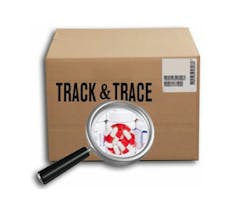The Food and Drug Administration’s Drug Supply Chain Security Act (DSCSA), signed into law in November 2013, outlines the critical steps required to build an electronic system for identifying and tracing prescription drugs distributed within the United States. The driving force behind the law is to improve quality control and remove counterfeit products from the supply chain.
It’s a much-needed regulation in the pharmaceutical industry given the ubiquity of fake medication distributed in the U.S. Once the development of the FDA system is complete in the next eight years, it will enable the verification of the legitimacy of the drug product identifier down to the package level, as well as enhance detection and notification of illegitimate products in the supply chain, and, facilitate efficient recalls of drug products. But the ability to do all of that comes at a price.
I read one article that estimates, at its basic level, the product serialization required by DSCSA will cost about $150,000-to-$300,000 per packaging line, and additional expenses will accrue as manufactures, and their supply chain partners, install IT systems to store and transmit serial codes and transaction histories.
Add in the FDA’s proposal for new quality metrics for manufacturing, as well companies’ continued compliance with current good manufacturing practice (CGMP) regulations, and drug manufacturers are caught in the FDA’s assorted “Acts,” exacerbated by deadlines, new technology deployments, and a skills shortage that could potentially impact a manufacturer’s ability to implement and manage the new system.
This year marked the beginning of product tracing requirements for manufacturers, distributors, dispensers (pharmacies), and repackagers. In January, the lot-level traceability deadline arrived, and by 2017, DSCSA requires that manufacturers mark packages with a product identifier, serial number, lot number, and expiration date.
The expectation is to provide as much information about a drug and who handled it each time it is sold in the U. S. market. Specifically, as the product changes hands through the supply chain, it must include transaction information (name of the product, strength, dosage form, lot number, and name and address of the previous business and subsequent owner); the transaction history (paper or electronic statement including the information for each transaction back to the manufacturer); and a transaction statement (paper or electronic attestation by the entity transferring ownership of the product that it is authorized under the Act, received from the authorized party, and there are systems and processes in place to perform verification).
For pharma manufacturers, this means the procurement of new equipment and expanded serialization capabilities. Just putting a serial code on a product won’t solve the problem, I’m told. Consider the massive amounts of data that will be generated for each item, as a range of serial number management events need to be tracked—from packed, picked, and shipped to received, recalled, damaged, or expired. And, manufacturers will need to keep the records of these events for 12 years. That’s an enormous amount of serialization storage. So perhaps the biggest worry is not complying with regulations at this point, but, rather, who is going to manage all that data, and how?
That’s why organizations like the OPC Foundation have recently put together a working group to address compliance through interoperability standards and templates. Meanwhile, technology companies, like Systech International, Tracelink, Acsis, Optel Vision, and others, are delivering end-to-end services that not only comply with the FDA’s transaction requirements for the U.S. drug market, but also deal with data aggregation and even compliance regulations in different countries.
Despite the looming deadlines, the industry is still learning about all aspects of compliance that is associated with DSCSA. That’s why at next month’s Pharma EXPO 2015 in Las Vegas-- which is co-produced by PMMI and the International Society for Pharmaceutical Engineering (ISPE)—there will be a range of educational opportunities addressing the latest regulations and providing clarification and actionable insights for manufacturers. In addition, there will be sessions showcasing the technologies that will help with DSCSA compliance, as well as information on strategies to put into place to future-proof the supply chain as requirements evolve.
Thinking about the future is important—especially now as drug manufacturers rush toward FDA compliance—because if done well, there is also a huge opportunity to apply technology and best practices as a way to create competitive advantage. Rather than just getting caught up in the requirements of “the Act,” use this forced upgrade to act like a progressive manufacturer.

